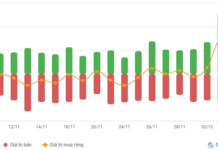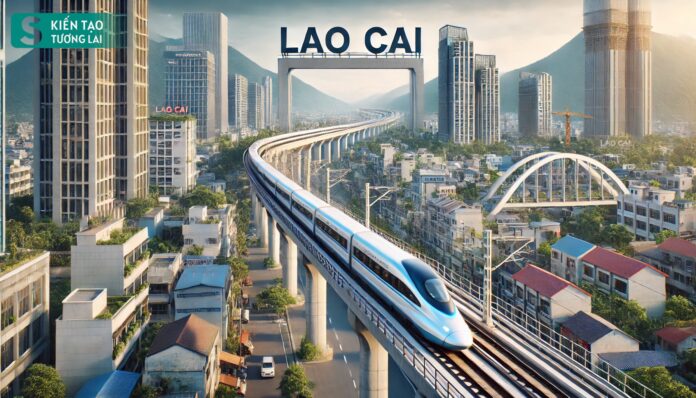Lao Cai – Hanoi – Hai Phong Railway Receives 4 Billion VND in Support
During the state visit to China on August 19th, General Secretary and President To Lam, together with General Secretary and President of China Xi Jinping, witnessed the signing of 14 cooperation documents between the two countries’ ministries, sectors, and localities. Among these documents was the Certificate of Handover for the Project Results of the Vietnam-funded standard-gauge railway planning for the Lao Cai – Hanoi – Hai Phong route between the Government of the Socialist Republic of Vietnam and the Government of the People’s Republic of China.
Recently, Deputy Prime Minister Tran Luu Quang also signed Decision No. 864/QD-TTg on providing 4 billion VND in support from the central budget reserve for 2024 to the Ministry of Transport to prepare a pre-feasibility study for the Lao Cai – Hanoi – Hai Phong route, as requested by the Ministry of Planning and Investment. The Ministry of Planning and Investment is responsible for the content of the report and proposals, ensuring compliance with regulations.
According to the Ministry of Transport, the investment preparation for this railway route is necessary and urgent. In June 2024, the Ministry of Transport submitted a document to the Prime Minister requesting the allocation of central budget reserve funds for 2024 to prepare for the investment in the Lao Cai – Hanoi – Hai Phong railway to promptly initiate research procedures for the project’s approval.

The Lao Cai – Hanoi – Hai Phong railway will contribute not only to the development of the northern region but also to the overall economic growth of Vietnam. Illustration: AI ChatGPT
Earlier, in February 2024, the Government Office issued Document No. 57/TB-VPCP announcing the conclusion of the Standing Government regarding the investment in several national railway routes. The Standing Government requested the Ministry of Transport to coordinate with the Ministry of Foreign Affairs and relevant agencies to promptly work with China to unify the memorandum of understanding, the support and cooperation investment plan for the Lao Cai – Hanoi – Hai Phong railway.
For now, the focus should be on investing in the Lao Cai – Hanoi – Hai Phong route (aiming for construction to commence in 2025), studying the use of preferential foreign loans (clarifying the interest rate, loan value, and loan term) and the issuance of bonds for investment.
What is the Planned Layout of the Lao Cai – Hanoi – Hai Phong Railway?
According to the plan, the Lao Cai – Hanoi – Hai Phong railway will have a standard gauge of 1,435 mm, starting at Lao Cai station and ending at Lach Huyen port in Hai Phong.
The project is approximately 388 km long, with a 5.6 km section connecting the Ha Khau (China) – Lao Cai (Vietnam) railway; it will be built towards the east, passing through eight provinces and cities: Lao Cai, Yen Bai, Phu Tho, Vinh Phuc, Hanoi, Hung Yen, Hai Duong, and Hai Phong. The endpoint will be at Lach Huyen port in Hai Phong.
The route includes 73 large bridges with a total length of over 130 km, 25 tunnels measuring 25 km in length, and 38 stations, including 29 newly constructed stations. The railway is expected to transport both passengers and cargo, with a total investment of around 10-11 billion USD.

Illustration: AI ChatGPT
The long-term forecast for the route’s cargo capacity is 10 million tons per year, with 15 train pairs operating daily.
Along the route, there will be 41 stations, including five main train assembly stations: Lao Cai, Yen Thuong, Nam Hai Phong, Ha Long, and Cai Lan. There will also be 27 stations for train overtaking; five intermediate stations with passenger and cargo operations concentrated in the provincial centers of Yen Bai, Viet Tri, Vinh Phuc, Lac Dao, and Hai Duong. There are four port stations for cargo handling: Nam Lac Huyen, Nam Do Son, Nam Dinh Vu, and Dinh Vu.
The Role of the Lao Cai – Hanoi – Hai Phong Railway
The Lao Cai – Hanoi – Hai Phong railway brings significant economic, social, and transportation benefits to the region and the country.
Firstly, it connects key economic regions in northern Vietnam, facilitating trade between the provinces of Lao Cai, Hanoi, and Hai Phong. This boosts local economic development, especially cross-border trade with China at Lao Cai.
Additionally, Hai Phong boasts the largest port cluster in northern Vietnam (Lach Huyen and Dinh Vu), from where goods can be transported by sea to various international markets. This railway route enables goods from China or northern border provinces to be swiftly transported to Hai Phong for export, expanding international trade opportunities for both Vietnam and China.

The Lao Cai – Hanoi – Hai Phong railway plays a crucial role in enhancing Vietnam-China export activities. Illustration: AI ChatGPT
In the future, this railway will help coordinate cargo flows efficiently, preventing congestion at border gates. Goods from China can be transported directly to Hai Phong for export to other countries without going through multiple intermediaries, thus optimizing the export process.
Using railways will also reduce the burden on the road system, especially National Highway 5, easing traffic congestion and reducing road accidents. It will further minimize road transport and maintenance costs.
Railway transportation usually offers lower costs compared to road transport, especially for heavy and bulk cargo. This reduces logistics expenses and enhances the competitiveness of Vietnamese enterprises.
Many agricultural products and consumer goods from Vietnam, such as rice, fruits, seafood, and wooden furniture, are exported to China through the Lao Cai border gate. Railways will help maintain the quality of these time- and temperature-sensitive products during transportation.
Additionally, as the route passes through famous tourist destinations in Lao Cai, Hai Phong, and Hanoi, it will facilitate the movement of domestic and international tourists between these locations, contributing to the tourism development of the provinces it traverses.
Hai Phong is a well-known brand in port services, boasting the most extensive and modern port system in northern Vietnam, capable of accommodating vessels over 145,000 tons and connecting directly to major European and American ports.
Lach Huyen port, located in Cat Hai town, Cat Hai district, Hai Phong city, is the deepest port in northern Vietnam. With a total area of 57 hectares and a 750-meter main pier that can accommodate vessels up to 145,000 DWT, it offers diverse services such as container ship operation, international transshipment, cold container services, container repair, and barge transportation. The port has a water depth of 16 meters in front of the pier, a turning basin width of 660 meters, and a channel depth of 14 meters (excluding tides)…
Dinh Vu port is located at the mouth of the Bach Dang River, on Dinh Vu peninsula, in Hai An district, Hai Phong city. With a total area of 24 hectares, a pier length of 425 meters, and a water depth of over 500 meters, Dinh Vu port is currently the most modern container-specialized port in the region. It has a container yard of 4.6 hectares, capable of holding nearly 3,000 TEU.
Hanoi to have nearly 100m wide road soon
Hanoi is about to have a nearly 100m wide, 1.3km-long road connecting from Xuân Diệu street to the Tây Hồ villa area.
Hanoi’s Update on the Delayed 1.000 billion VND Hospital Project
To address the challenges faced by investors, the Hanoi People’s Committee has instructed the Long Bien People’s Committee and the Department of Natural Resources and Environment to resolve any obstacles that arise during the implementation of the Thang Long 1,000-Year Oncology and Plastic Surgery Hospital project.
Astonishingly high price for old and dilapidated apartment buildings reaching nearly 200 million VND/m2, rivaling the most luxurious condominiums in Hanoi
Old collective apartments with prices starting from 100 million VND/m2 are usually the first-floor units that can be used for commercial purposes, while the upper-floor units are priced at 60-80 million VND/m2 for residential purposes.














































